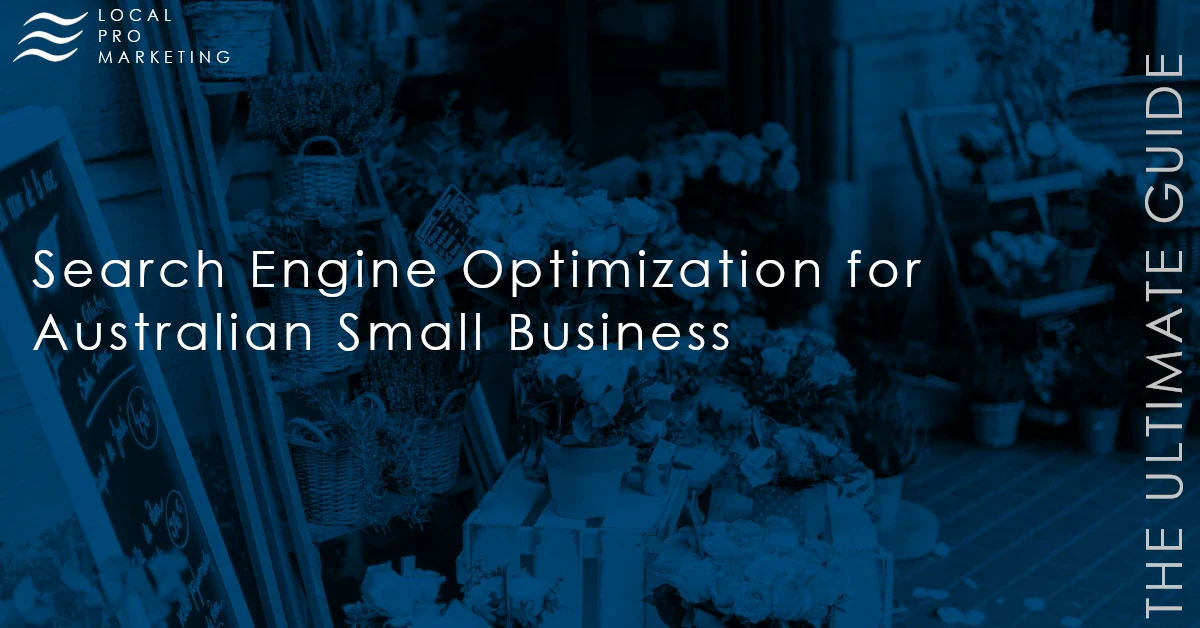Email marketing is a highly effective digital marketing strategy for small businesses that want to reach and engage with their customers. Unlike other marketing channels that rely on algorithms and paid advertising, email marketing allows you to communicate directly with your audience in a more personalized and targeted way.
We cover everything you need to know about email marketing, from building your email list to creating effective campaigns that drive results. Whether you’re new to email marketing or looking to optimize your existing strategy, this guide will provide you with the knowledge and tools you need to succeed.
So, why is email marketing so important for small businesses? For starters, email marketing is one of the most cost-effective marketing strategies available. With low costs per send, you can reach a large audience without breaking the bank. Additionally, email marketing allows you to build relationships with your customers by providing them with valuable content and personalized offers. This can help increase customer loyalty and drive sales over time.

Building Your Email List
The foundation of any successful email marketing campaign is a high-quality email list.
- Offer something of value – In order to entice people to sign up for your email list, you need to offer something of value in return. This could be a discount code, a free guide or e-book, or access to exclusive content. Whatever it is, make sure it’s relevant to your business and something your target audience will find valuable.
- Use sign-up forms on your website – Make it easy for people to sign up for your email list by placing sign-up forms prominently on your website. This could be in the header or footer of your site, or as a pop-up that appears after someone has spent a certain amount of time on your site.
- Promote your email list on social media – Use your social media channels to promote your email list and encourage people to sign up. You could create social media-specific offers, like a free download or entry into a giveaway, that are only available to your email subscribers.
- Use offline channels to promote your email list – Don’t forget about offline channels like events and in-store promotions. Use signage and other promotional materials to encourage people to sign up for your email list, and offer an incentive like a free gift or discount code for doing so.
- Leverage partnerships and collaborations – Partner with other businesses or influencers in your industry to promote each other’s email lists. This could involve cross-promoting each other’s content or offering joint incentives for signing up for both email lists.
By following these best practices, you can build a high-quality email list that will help you reach and engage with your target audience. Remember to always obtain permission before adding someone to your list, and to provide clear instructions on how to unsubscribe from your emails.

Creating Effective Email Campaigns
Now that you have a strong email list, it’s time to create effective email campaigns that will engage your subscribers and drive results. In this section, we’ll cover some key elements of successful email campaigns.
- Subject Line – The subject line is the first thing your subscribers will see, so it’s important to make it compelling and relevant. A good subject line should be short, to the point, and convey the value or benefit of opening the email. Avoid using click-bait tactics or misleading subject lines, as this will lead to high unsubscribe rates and damage your brand’s reputation.
- Email Content – The content of your email should be relevant, valuable, and engaging. Avoid long paragraphs and blocks of text, and use images and other visual elements to break up the content and make it more visually appealing. Use personalization and segmentation to make the email feel more tailored to the recipient, and include a clear call-to-action that encourages them to take a specific action.
- Mobile Optimization – More than half of all emails are opened on mobile devices, so it’s essential that your emails are optimized for mobile. Use a responsive design that adjusts to different screen sizes, and make sure that your content and images are easy to read and load quickly on mobile devices.
- Frequency – Finding the right frequency for your email campaigns is important. Sending too many emails can lead to high unsubscribe rates, while not sending enough can cause your subscribers to forget about your brand. Test different frequencies and see what works best for your audience.
- Testing and Optimization – Testing and optimizing your email campaigns is crucial for improving their effectiveness over time. Test different subject lines, content formats, calls-to-action, and send times to see what resonates best with your audience. Use analytics to track your open rates, click-through rates, and conversions, and use this data to make data-driven decisions about how to improve your campaigns.
By focusing on these key elements, you can create effective email campaigns that engage your subscribers and drive results for your business.

Email Marketing Tools and Platforms
There are a wide variety of email marketing tools and platforms available to help you create and manage your email campaigns. In this section, we’ll cover some of the most popular options and their key features.
- Mailchimp – Mailchimp is one of the most popular email marketing tools, with over 14 million users worldwide. It offers a wide range of features including email templates, automation, segmentation, A/B testing, and analytics. Mailchimp is user-friendly and easy to navigate, making it a great choice for beginners.
- Constant Contact – Constant Contact is another popular email marketing platform that offers a wide range of features including email templates, list management, social media integration, and analytics. It also offers a unique feature called “Email Plus” which includes additional features like surveys, coupons, and event management.
- Campaign Monitor – Campaign Monitor offers a variety of email templates, automation, segmentation, and analytics features. It also offers a unique feature called “Visual Journey Designer” which allows you to create custom customer journeys that can be triggered by specific user actions.
- Hubspot – Hubspot offers a full suite of marketing tools including email marketing, CRM, marketing automation, and more. Its email marketing features include email templates, automation, segmentation, A/B testing, and analytics. Hubspot is a great choice for businesses looking for an all-in-one marketing solution.
- ConvertKit – ConvertKit is a popular email marketing tool for bloggers and creators. Its features include automation, segmentation, visual automation builder, and landing pages. ConvertKit is known for its user-friendly interface and focus on personalization and automation.
When choosing an email marketing tool or platform, consider your budget, the features you need, and the size of your email list. Many tools offer free plans or free trials, so you can test them out before committing to a paid plan.

Best Practices for Email Marketing
To get the most out of your email marketing campaigns, it’s important to follow some best practices. In this section, we’ll cover some key tips for creating effective and successful email campaigns.
- Build a High-Quality Email List – As we mentioned earlier, having a high-quality email list is key to the success of your email marketing campaigns. Make sure your list is made up of subscribers who have opted in and are interested in your brand. Avoid buying email lists or adding people without their permission, as this can lead to high unsubscribe rates and damage your brand’s reputation.
- Segment Your Email List – Segmenting your email list means dividing it into smaller groups based on common characteristics such as demographics, location, behavior, and interests. This allows you to tailor your messages to specific groups and increase the relevance and effectiveness of your campaigns.
- Personalize Your Emails – Personalization is one of the most effective ways to increase engagement and conversions in your email campaigns. Use your subscribers’ names, previous purchases, and other data to personalize your emails and make them feel more relevant to the recipient.
- Use Clear and Compelling Calls-to-Action – A clear and compelling call-to-action (CTA) is essential for driving conversions in your email campaigns. Use action-oriented language and make the CTA stand out visually in your email.
- Optimize Your Emails for Mobile – As we mentioned earlier, more than half of all emails are opened on mobile devices. Make sure your emails are optimized for mobile by using a responsive design, keeping your content short and to the point, and using clear and easy-to-read fonts.
- Test and Optimize Your Campaigns – Testing and optimizing your email campaigns is crucial for improving their effectiveness over time. Test different subject lines, content formats, calls-to-action, and send times to see what resonates best with your audience. Use analytics to track your open rates, click-through rates, and conversions, and use this data to make data-driven decisions about how to improve your campaigns.
By following these best practices, you can create effective and successful email marketing campaigns that engage your subscribers and drive results for your business.

Email Marketing Metrics to Track
To measure the success of your email marketing campaigns, it’s important to track certain metrics. In this section, we’ll cover some of the most important metrics to track and what they can tell you about the effectiveness of your campaigns.
- Open Rate – Open rate is the percentage of subscribers who opened your email. This metric is a good indication of how well your subject line and sender name resonated with your audience. A low open rate could indicate that your subject line needs improvement or that your subscribers are not engaged with your brand.
- Click-Through Rate (CTR) – Click-through rate is the percentage of subscribers who clicked on a link in your email. This metric is a good indication of how well your content and calls-to-action resonated with your audience. A low CTR could indicate that your content needs improvement or that your calls-to-action are not compelling enough.
- Conversion Rate – Conversion rate is the percentage of subscribers who completed a desired action, such as making a purchase or filling out a form, after clicking on a link in your email. This metric is a good indication of how well your email campaign is driving results for your business. A low conversion rate could indicate that your landing page needs improvement or that your offer is not compelling enough.
- Bounce Rate – Bounce rate is the percentage of emails that were undeliverable and returned to the sender. There are two types of bounces: hard bounces, which occur when an email address is invalid or no longer in use, and soft bounces, which occur when there is a temporary issue with the recipient’s email server. A high bounce rate could indicate that your email list needs cleaning or that your emails are being marked as spam.
- Unsubscribe Rate Unsubscribe rate is the percentage of subscribers who opt out of receiving your emails. While some unsubscribes are normal, a high unsubscribe rate could indicate that your emails are not meeting your subscribers’ expectations or that your email frequency is too high.
By tracking these metrics and analyzing your email campaigns, you can identify areas for improvement and make data-driven decisions to optimize your campaigns for success.

Best Practices for Email Marketing
Now that you understand the basics of email marketing and how to measure its effectiveness, let’s cover some best practices to help you create successful campaigns.
- Build a Quality – Email List Your email list is the foundation of your email marketing campaigns, so it’s important to build a quality list of engaged subscribers. Avoid purchasing email lists or using tactics to artificially inflate your list size, as these practices can lead to high bounce rates and low engagement. Instead, focus on building your list organically by offering valuable content and incentives for people to sign up.
- Segment Your List – Segmenting your email list allows you to tailor your messages to specific groups of subscribers based on their interests, behaviors, and demographics. This can lead to higher open and click-through rates and more personalized experiences for your subscribers.
- Use a Clear and Compelling Subject Line – Your subject line is the first thing your subscribers see when they receive your email, so it’s important to make it clear and compelling. Use action-oriented language, highlight the benefits of your offer, and keep it concise (around 50 characters or less).
- Optimize for Mobile Devices – More than half of all emails are opened on mobile devices, so it’s important to optimize your emails for mobile viewing. Use a responsive design that adapts to different screen sizes, keep your text and images large enough to be easily readable on a small screen, and use a clear and concise layout.
- Include a Clear Call-to-Action (CTA) – Your call-to-action is the key element that drives subscribers to take action after reading your email. Make sure your CTA is clear, specific, and compelling, and use action-oriented language to encourage subscribers to click through to your website or landing page.
- Test and Iterate – Email marketing is not a one-size-fits-all solution, so it’s important to test and iterate your campaigns to find what works best for your audience. Experiment with different subject lines, content formats, and CTAs, and use A/B testing to compare different versions of your emails to see what resonates best with your subscribers.
By following these best practices, you can create effective email marketing campaigns that engage your audience, drive results for your business, and ultimately help you achieve your marketing goals.

Getting Started with Email Marketing
Now that you have a solid understanding of email marketing and its best practices, it’s time to start creating your own campaigns. Here are some steps to get started:
- Define Your Goals and Objectives – Before you begin creating your email campaigns, it’s important to define your goals and objectives. What do you want to achieve with your email marketing? Are you looking to increase sales, build brand awareness, or drive traffic to your website? Once you have a clear understanding of your goals, you can create campaigns that are tailored to achieve those objectives.
- Choose an Email Service Provider – There are many email service providers (ESPs) available, so it’s important to choose one that fits your needs. Look for a provider that offers the features you need (such as automation, segmentation, and A/B testing), has a user-friendly interface, and fits within your budget.
- Build Your Email List – Now that you have an ESP, it’s time to start building your email list. Offer incentives for people to sign up, such as exclusive content, discounts, or freebies. Make sure you have permission to email your subscribers and that your opt-in process is clear and easy to understand.
- Segment Your List – Once you have subscribers on your list, it’s important to segment them based on their interests, behaviors, and demographics. This allows you to send targeted and relevant messages that are more likely to resonate with your subscribers.
- Create Your Email Campaign – With your list segmented, it’s time to start creating your email campaign. Use a clear and compelling subject line, include engaging content and visuals, and end with a clear call-to-action. Don’t forget to optimize your email for mobile devices.
- Test and Iterate – Once you’ve sent your email campaign, it’s important to analyze the results and make changes as needed. Use your ESP’s analytics tools to track open rates, click-through rates, and other metrics, and use A/B testing to compare different versions of your emails to see what resonates best with your subscribers.
Email marketing can be a powerful tool for small businesses, but it’s important to approach it strategically and thoughtfully. By following these steps and best practices, you can create effective campaigns that engage your audience and help you achieve your marketing goals.

Email marketing is a cost-effective and efficient way for small businesses to connect with their audience and achieve their marketing objectives. By following best practices such as segmenting your email list, personalizing your content, and optimizing for mobile devices, you can create effective campaigns that engage your subscribers and drive results.
Remember, email marketing is not a one-time effort. It requires consistent effort and attention to achieve your goals. Regularly review and analyze your results, test different approaches, and continue to refine your strategy to get the best results.
With the right approach and tools in place, email marketing can be a powerful tool for your small business. So, take the time to understand your audience, define your goals, and create compelling campaigns that connect with your subscribers and help you achieve your marketing objectives.
Thanks for taking the time to read this blog post on Email Marketing. Our team at Local Pro Marketing is committed to providing valuable insights and strategies to help businesses succeed in the ever-evolving world of email marketing. We hope you found this post helpful and informative. Don’t hesitate to reach out to us if you have any questions or leave a comment.









